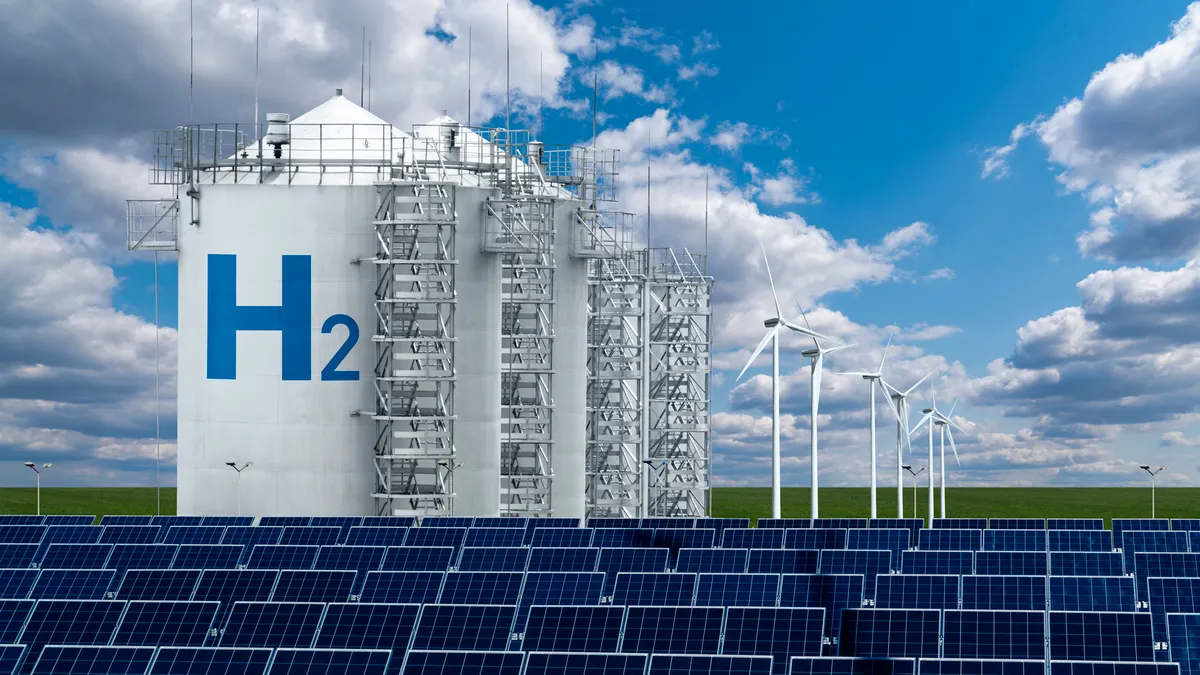Dive Brief:
-
A hydrogen blending trial at Constellation Energy’s Hillabee Generating Station, a 753-MW combined cycle natural gas plant in central Alabama, operated successfully on a 38% hydrogen blend with only minor modifications to the plant, the company said May 24. The test took place on May 18.
-
Emissions of nitrogen oxide did not increase during the test, according to the announcement. Constellation estimates that a 38% hydrogen blend would decrease the plant’s carbon emissions by 270,000 metric tons annually.
-
EPRI, an independent non-profit energy R&D institute, and the Fuel Cell & Hydrogen Energy Association, or FCHEA, both heralded the test as an important next step for the industry, but they said the hydrogen industry needs to make additional advances for hydrogen blending to become feasible at utility scale.
Dive Insight:
If the Alabama test has any implications for the broader hydrogen industry, it suggests mixing the fuel with natural gas could hold even greater potential for existing natural gas plants than previously supposed. But don’t expect to see utilities blending hydrogen in their power plants on a regular basis in the immediate future, Frank Wolak, president and CEO of FCHEA, said.
Previous tests have demonstrated the feasibility of blending 5-15% hydrogen in existing natural gas-fired plants, Wolak said. And while there are turbines in the works designed to run on greater percentages of hydrogen, Wolak said this was the first test outside a laboratory setting to exceed that range.
“This test proved what we’ve suspected for years — that blending clean hydrogen with natural gas can safely reduce emissions without major modifications to an existing plant that’s well over a decade old,” Joe Dominguez, president and CEO of Constellation, said in a news release. “As the EPA and numerous climate experts have acknowledged, the availability of affordable clean hydrogen at scale will be essential if we are going to prevent the ravaging effects of climate change.”
Demonstration projects assessing the viability of blending hydrogen in gas plants are a critical step in identifying the potential — and potential challenges — of deploying this new fuel, said Neva Espinoza, vice president of energy supply and low-carbon resources at EPRI, which participated in the Hillabee test. But to deploy hydrogen at scale, Espinoza said, will also require advances in hydrogen production, transportation and storage.
“Hydrogen production through electrolysis is very energy intensive, and there will be a need to develop more infrastructure than is available today to deliver the volume needed to operate power generation assets,” Espinoza said.
A recent proposal by the U.S. Environmental Protection Agency that would impose new limits on carbon pollution from coal and natural gas-fired power plants has increased utility interest in hydrogen, which could reduce carbon emissions from power generation, Wolak said. But each power plant is different, and the results from one power plant can’t be generalized to another. So he said the first likely step for most utility companies is conducting their own blending tests. Once site-specific expectations are set, he said, they’ll begin to evaluate the availability and cost of hydrogen fuel.
“I think these options and scenarios are going to start coming out once operators determine what they can do and what their limits are,” he said. “Then you will start to see people asking, where do I get the supply.”














